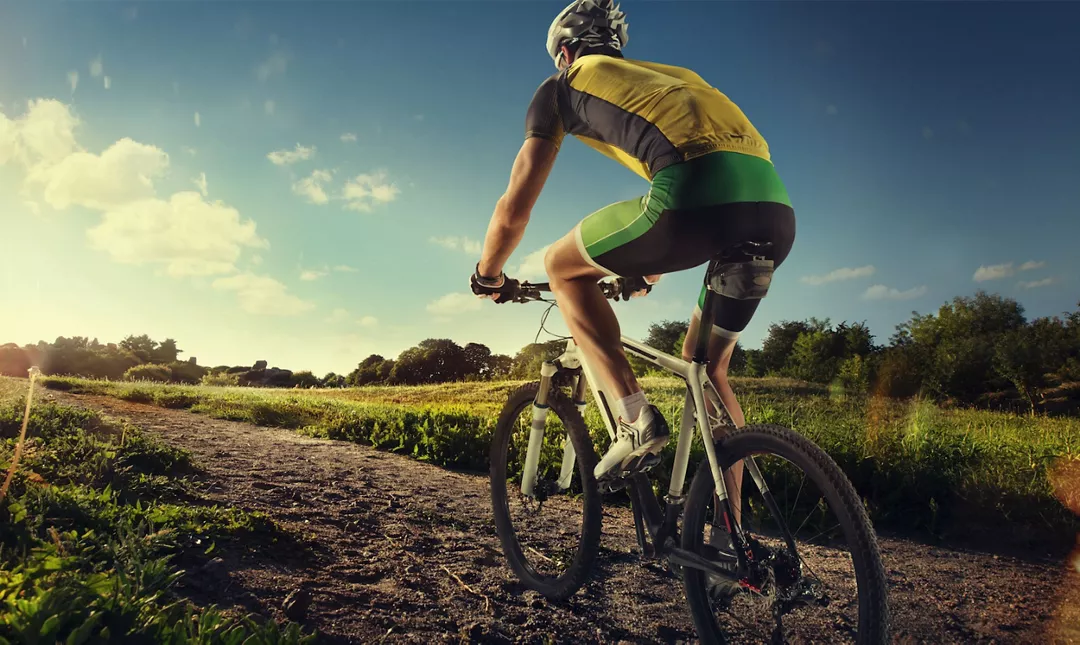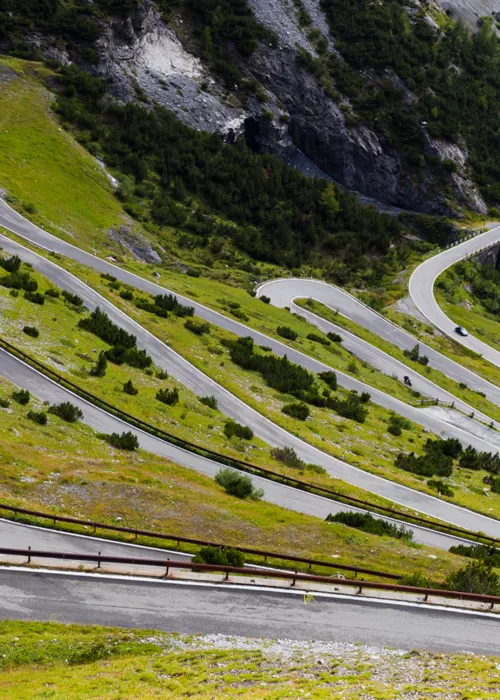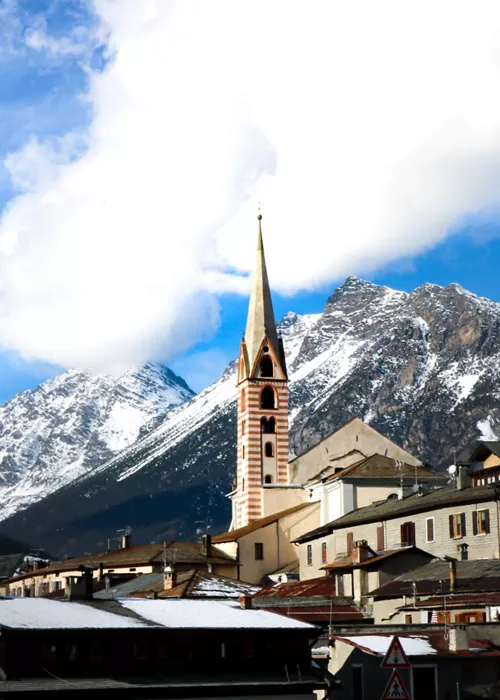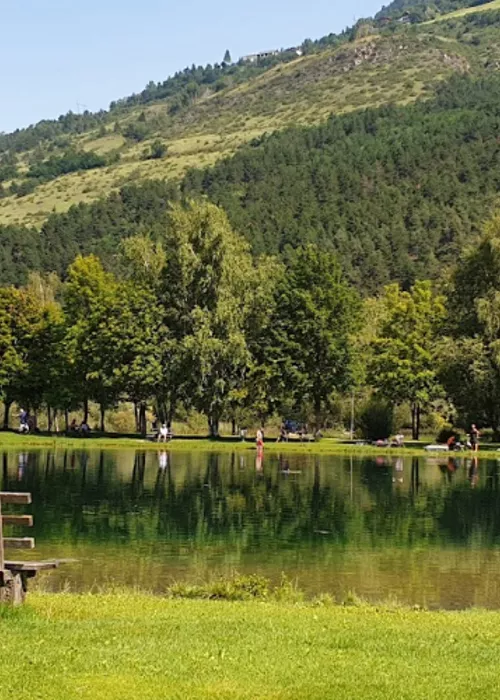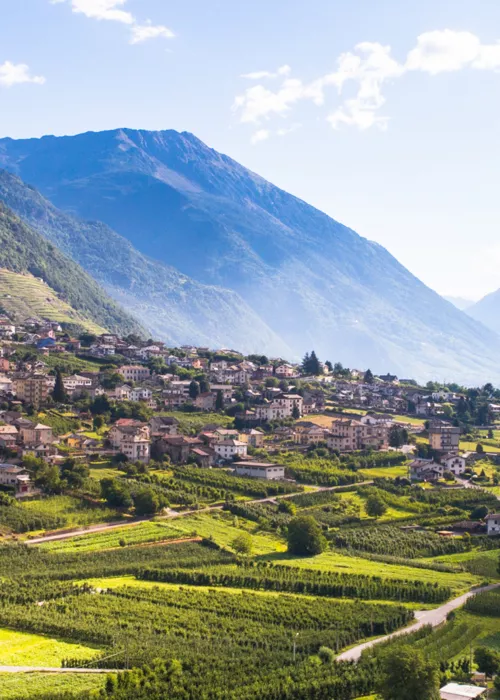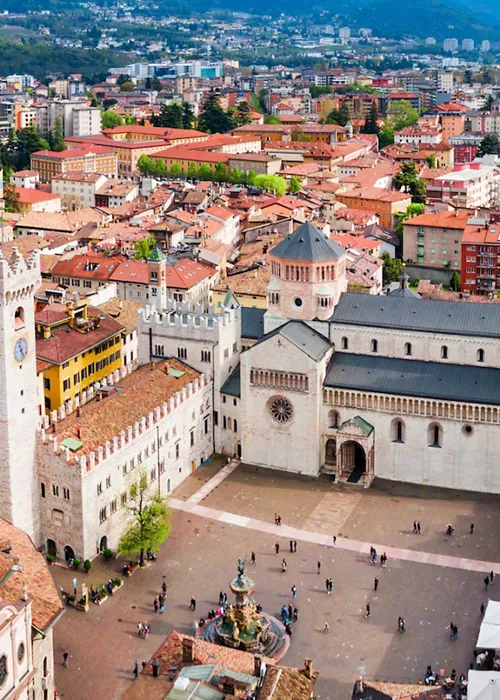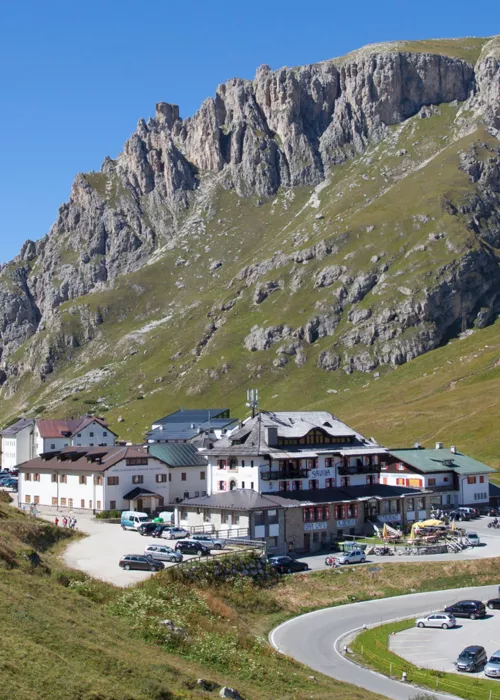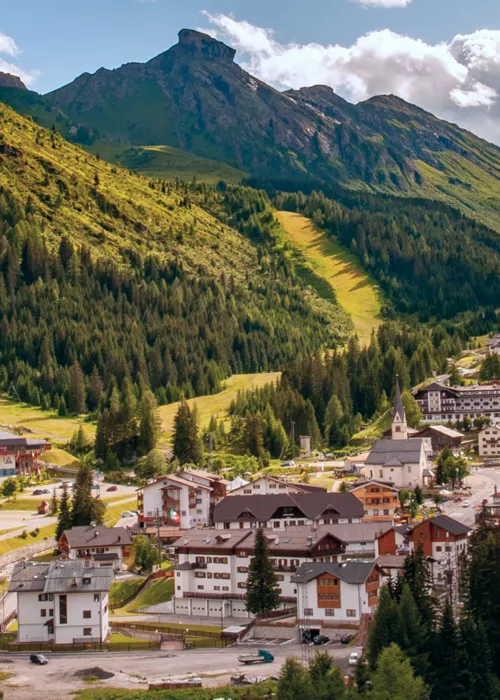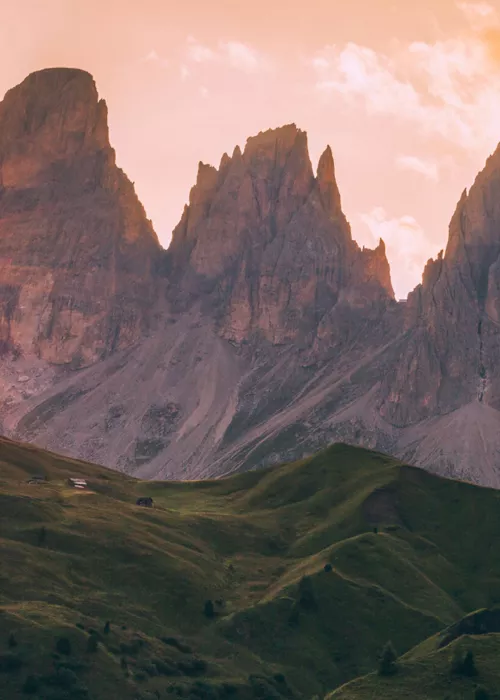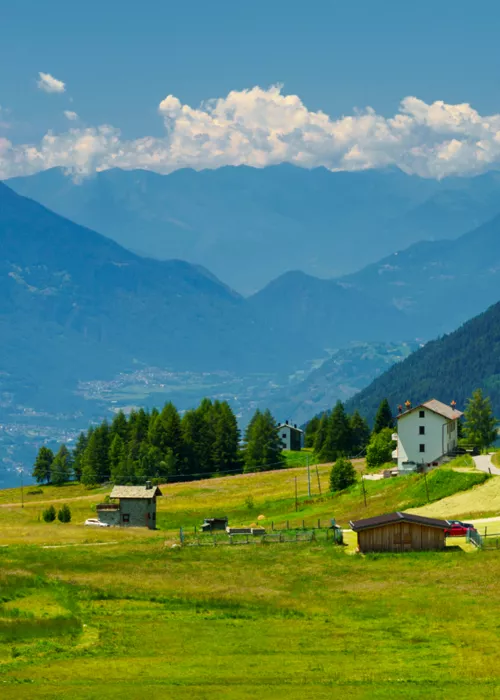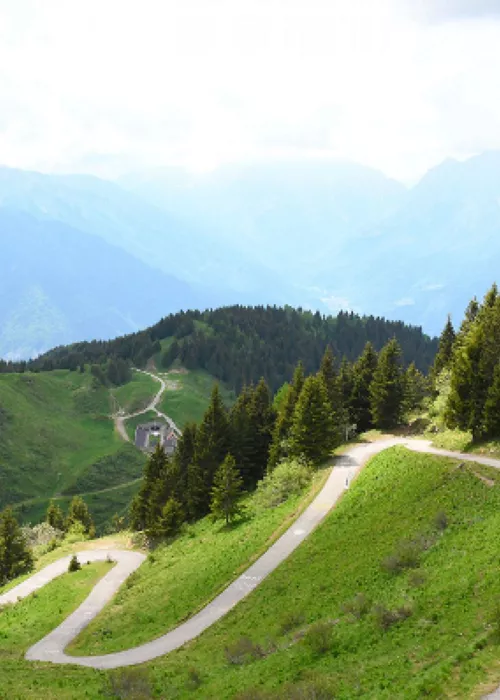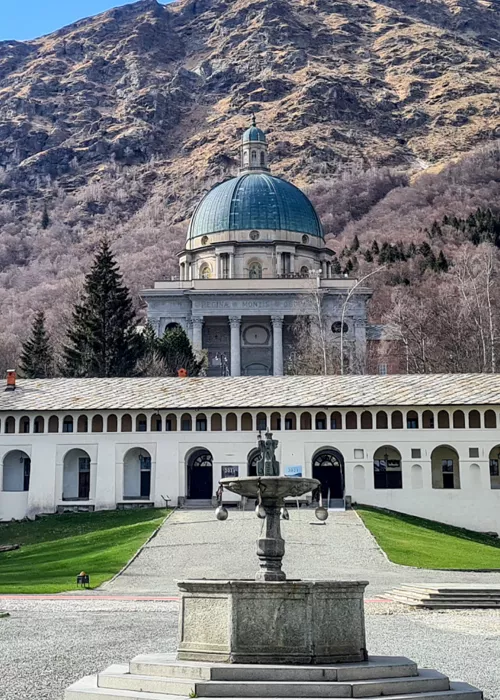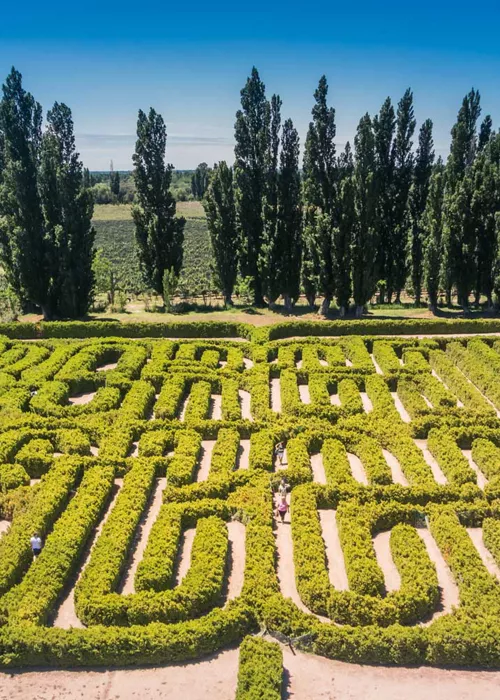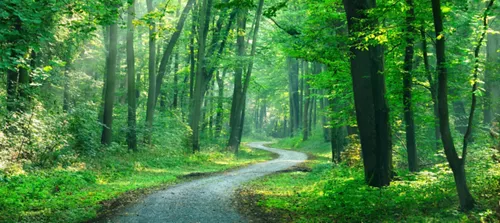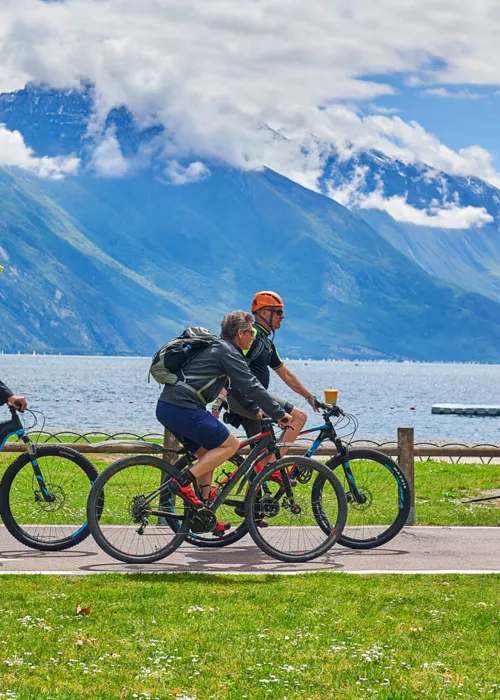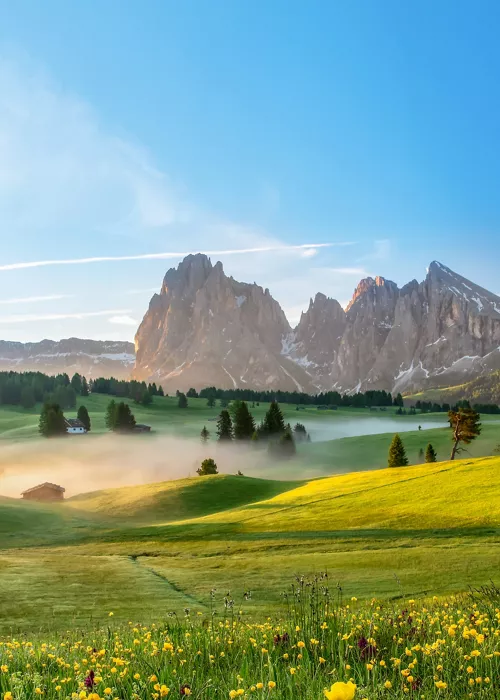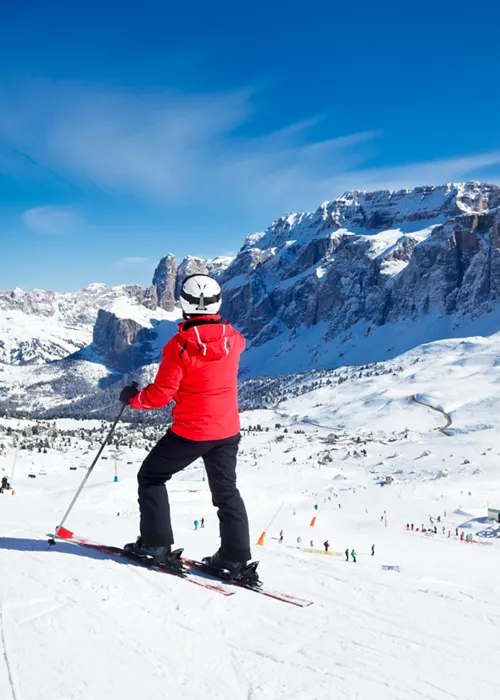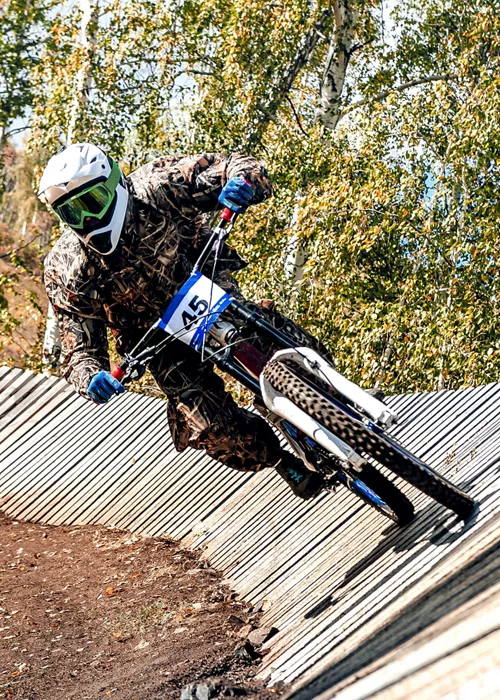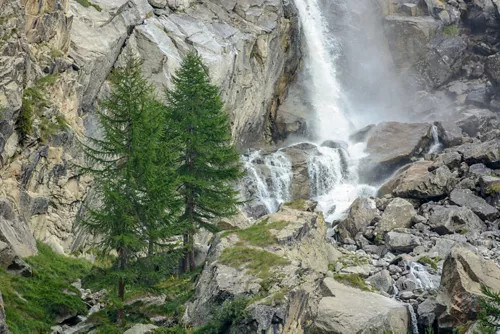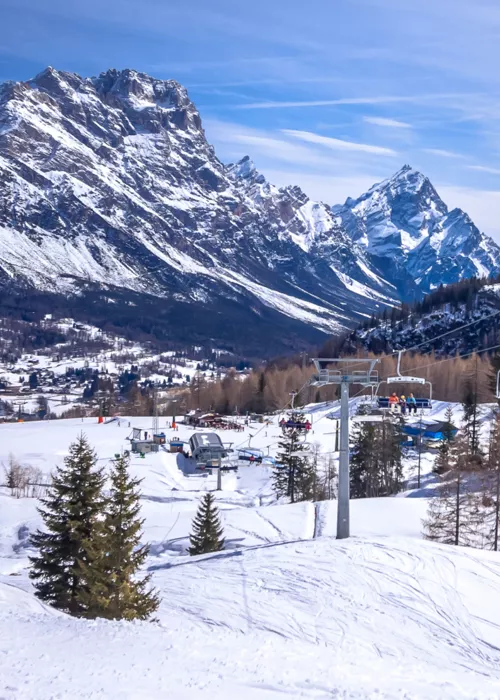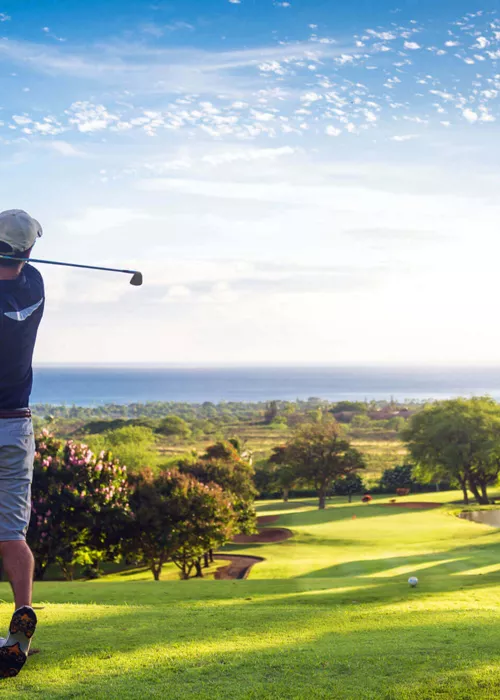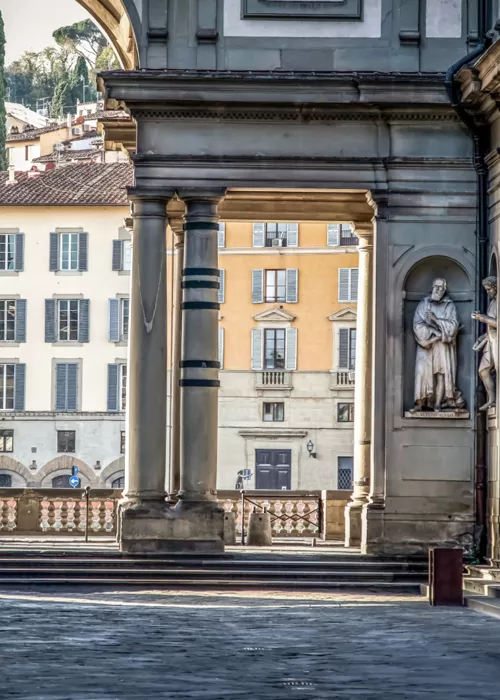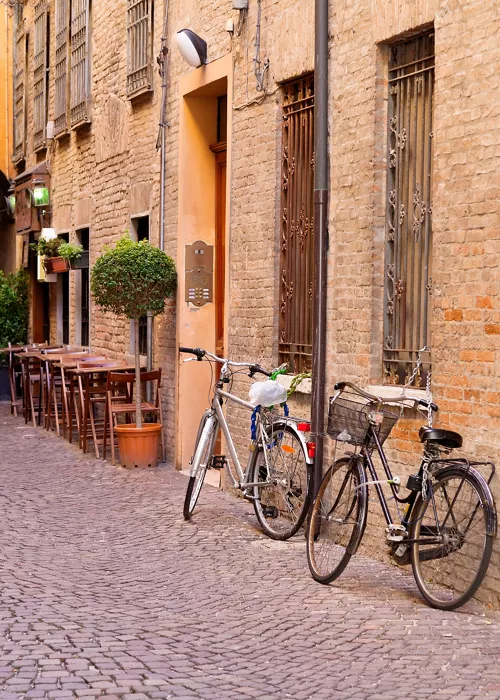100 years (and more) of Italian cycling: the places we can’t forget
7 minutes
The Giro d'Italia is one of the world's most famous cycling races, a big media event which draws attention of enthusiasts and non-enthusiasts alike: it is Italy’s major bicycle race, a legendary sports event that boasts more than 100 years of history.
The Giro runs throughout Italy including any region: the tour takes in a mix of hilly stages and timed races on the plains, but the most awaited moment of the race are the mountain stages, hard and exciting, that pass through some of the most emblematic spots of the Alps and the Apennines. If you wish to relive the routes that marked the history of the Giro d’Italia, here's the places you cannot miss
Stelvio Pass
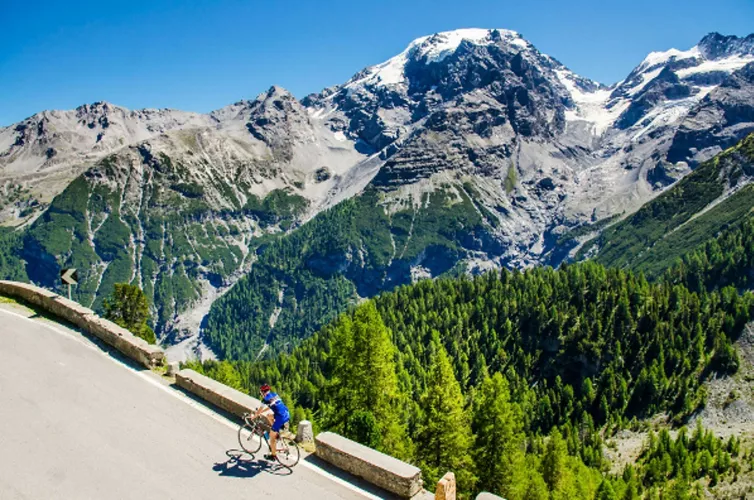
On the border between Trentino-Alto Adige and Lombardy, in the Rhaetian Alps, at an altitude of 2,758 meters, stands the highest Italian mountain pass, much appreciated by cyclists, the highest point reached in the Giro: the Stelvio Pass. 25 kilometer-long, with forty-eight hairpin turns, it is a winding, sensational road that connects Bormio, in Valtelline, to Prato allo Stelvio, in the Vinschgau Valley. Stelvio was first included in the Giro d’Italia in 1953, when it witnessed one of Fausto Coppi’s greatest feats. In the last stage, from Bolzano to Bormio, the great Fausto, the so called ”Heron”, got up on the pedals and managed to leave behind the leader of the race, the Swiss Hugo Koblet, winning the pink jersey and his fifth and last Giro, thirteen years after his first one. In 1965, five years after his death, the “Cima Coppi” title was created to identify the highest altitude in every tour edition: the Stelvio has been the utmost “Cima Coppi” for twelve times ever since.
Gavia Pass
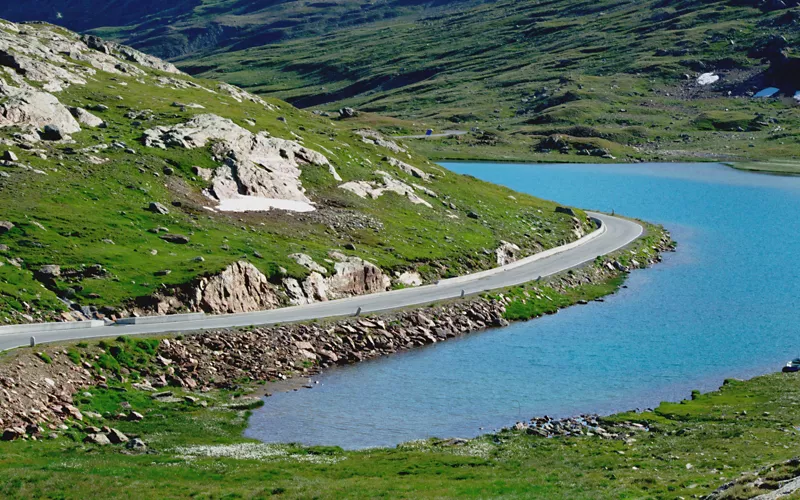
One of the preferred places for road bicycle racing together with the Stelvio Pass, among the most arduous and famous mountain legs of the Giro, is the Gavia Pass: 17 kilometer-long, with an average slope of 8%, lies in the southern Rhaetian Alps, connecting Valtellina to the Valcamonica valley, at an altitude of 2,618 meters. The Giro d’Italia has crossed it fourteen times: racers tackled its terrible climb for the first time on 8 June 1960, during the last stage from Trento to Bormio. Little or nothing was known of the pass at that time: Imerio Massignan, alone at the head of the race, was the first racer to cross the pass, narrow and arduous, at that time still a dirt road (it was paved only during the 1990s). Massignan, at that time only 23-year old, was competing for the pink jersey with cycling legends (Charly Gaul, Jacque Anquetil, Gastone Nencini). A pure climber, he managed to be victorious despite the steep climb, among gravel and stones, cliffs and six-meter high snow walls on the roadside. Thanks to this heroic exploit, since that day, the Gavia Pass is indissolubly linked to Imerio Massignan, who earned the nickname “Angel of Gavia”.
Pordoi Pass
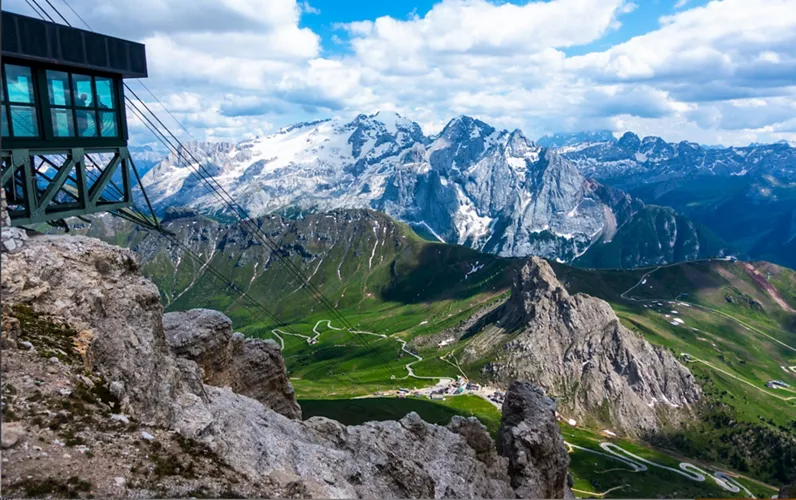
Wide and with narrow hairpin turns in the final part, despite not being difficult or with high slopes, the Pordoi Pass is very popular among cyclists because of the beauty of its landscape and for being one of the historic places of the Giro. The pass is included in the Sellaronda circuit and is at 2,239 meters, connecting Arabba, in the Dolomiti Bellunesi, to Canazei, in the Fassa Valley.
Pordoi has been an arrival stage several times: the Giro crossed it for the first time in 1940, and has been Cima Coppi, highest peak in the race, thirteen times. Its name is linked to Fausto Coppi, the “Campionissimo” (big champion), who was the lead on Pordoi for five times writing memorable pages of the Giro (at the pass there is a memorial to Coppi). Coppi first experienced Pordoi right in 1940, in a cold snowy day: only 20 year-old, a Bartali’s domestique, Coppi was in serious trouble and was considering to quit the race when Bartali urged him to continue throwing snow at him and calling him ”acquaiuolo” (a weak person in the Tuscan dialect). Eventually Coppi managed to defend his pink jersey and won his first Giro d’Italia.
Mortirolo Pass
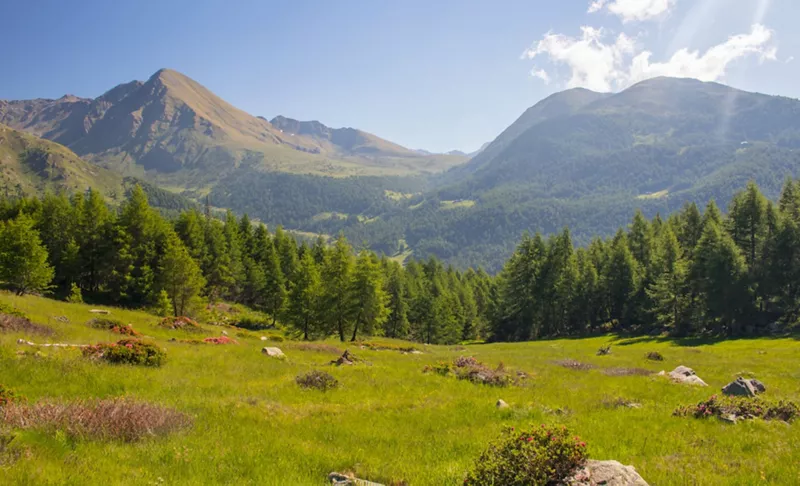
12 kilometers almost entirely in the woods, with an average slope of 10% (up to a maximum of 20%), the Mortirolo Pass is at an altitude of 1,852 meters, between Valtelline and the Valcamonica valley. Narrow and not very popular, long considered a secondary mountain road, Mortirolo joined the Giro d’Italia circuit (becoming a myth) only in 1990; ever since it has been crossed several times. One of its protagonists was Marco Pantani, who in the 1994 Giro d’Italia, at that time a budding cyclist, impressed with a sensational lead that started a legendary career. During the stage from Merano to the Aprica Pass, after climbing Stelvio, Pantani managed to leave behind fearsome rivals like Miguel Indurain and Claudio Chiappucci. In 2006, a shrine to Pantani was placed in one of the most panoramic viewpoints along the way to the pass, at km 8: Pantani is depicted in an uphill sprint, hands down on the handlebars as he looks at his opponents.
Monte Zoncolan
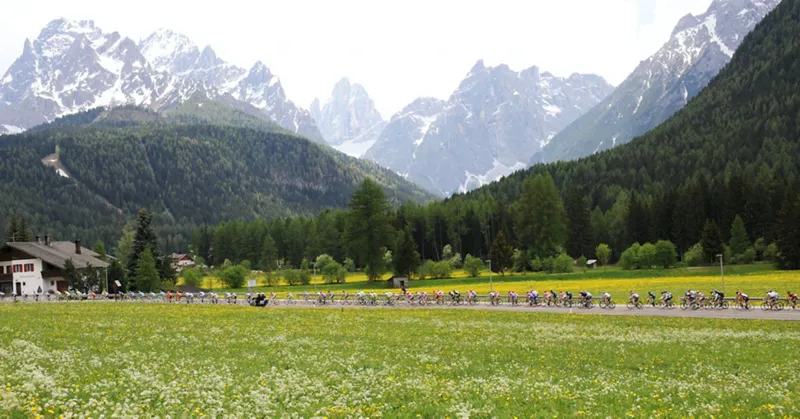
The “balcony” of the Carnic Alps is a 1,750 m high massif in the province of Udine, that road cycling enthusiasts know very well. Due to its sharp climb, with steep straight lines and narrow, arduous bends, cyclists nicknamed it “Kaiser” and “Monster of Carnia”. The western side, from Ovaro – 10 km long, with an average slope of 12% up to a maximum of 22% – is considered one of the hardest climbs in Europe. The eastern side, from Sutrio, 13 km long and 1,200 meters difference in altitude, is less demanding and shows irregular slopes, but the most challenging stretches are in the last part. The Giro d’Italia included Zoncolan in recent times: the first time was in 2003, from the Sutrio side, the less demanding one. During that leg (the 12th of that edition, one of the last races with Marco Pantani), the winner was Gilberto Simoni, who won the Giro in 2003. The 2007 Giro, instead, faced the hardest side, from Ovaro: Gilberto Simoni succeeded again in the enterprise of taming the “monster”. Due to his double victory and the affection that binds him to Zoncolan, ever since the mountain is called “Mountain Simoni”.
Sormano Wall
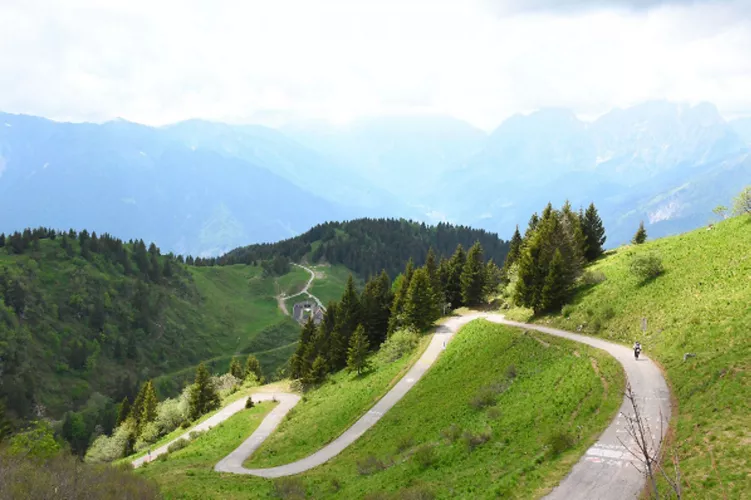
It is less than two kilometers, with just four hairpin turns, but reaches an incredible slope, with peaks of 27%: the narrow, steep “Sormano Wall” is a famous climb only a few cyclists are able to tackle. The road breaks off from the main road from Asso to Pian del Tivano, in the province of Como, up to an altitude of 1,124 m with an average slope of 17% and a difference in height of 300 meters. The road has a peculiarity: in order to encourage the cyclists along the climb and inform how far the top is, the pavement reports the elevation meter after meter. The “Wall” "entered the history of cycling with the 1960 Giro di Lombardia, the first race that included it in its itinerary. The climb turned out to be so hard that many cyclists had to get off their bikes and walk (including Van Loy, a world leader at that time). The “Wall” was in the Giro di Lombardia for two more editions, until 1962, when it was abandoned and included again only in 2012. One of the few cyclists able to climb it without leaving the pedals was the great Imerio Massignan, to whom the journalists gave the nickname "King of the Wall".
The Oropa ascent
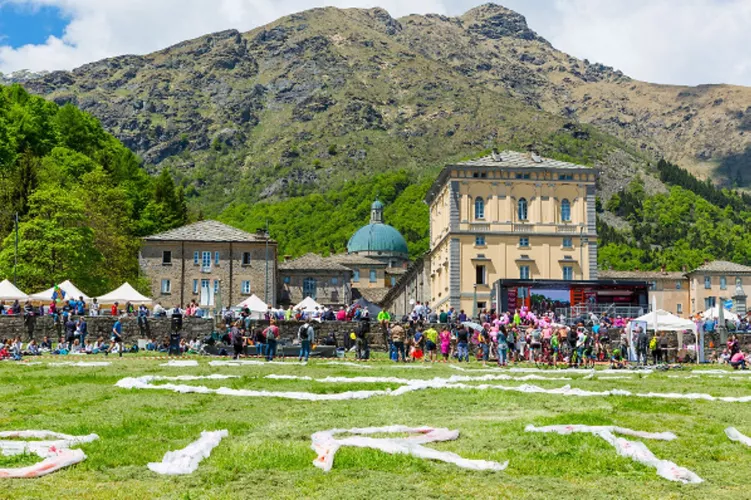
13 kilometers and 750 meters of difference in height, the Oropa Ascent switches between mild and demanding stretches with a slope often higher than 10% and is a historic stage in the Giro d’Italia. The road leads from Biella to the front of the Sanctuary of Oropa (at an altitude of 1,150 meters), a centuries-long pilgrimage destination, one of the “Sacri Monti of Piedmont and Lombardy”, Unesco World Heritage site. The sanctuary has been an arrival stage of the Giro for six times. Cyclists like Taccone, Ghirotto, Bruseghin, Battaglin but especially Pantani, won in Oropa; on 30 May 1999, two days before being excluded from the Giro, Pantani marked one of his most memorable exploits here. Pantani, holder of the pink jersey for seven stages, was cycling along a straight stretch, in the turning point of the race, when his bike chain fell down; he had to stop, but left quickly. During those ten kilometers before the arrival, Pantani was the leader of one of the most memorable recoveries in the history of the Giro: after overcoming 49 rivals – including brilliant athletes like Ivan Gotti, Gilberto Simoni and Paolo Savoldelli – he managed to catch up 40 seconds of delay and reach the lead of the race in the hardest part of the climb, the first cyclist to cross the finishing line.

